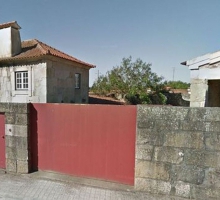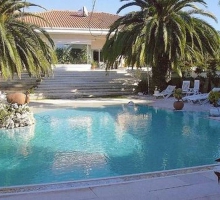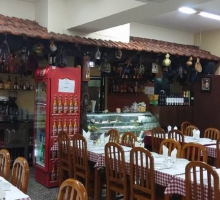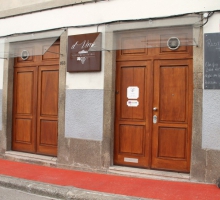Bridge of Lagoncinha
It was built in the 12th century, probably on the ruins of an old Roman bridge path that linked Bracara Augusta to Cale.
The Longocinha Bridge, over the River Ave, possibly dating back to the medieval period, substituted by the old Roman Bridge establishing the connection between Porto and the city of Braga and particularly, the connection between Porto and Santarém, by which was considered one of the most important roads of the Roman Empire.
Situated in the southern part of the municipality of Vila Nova de Famalicão, in the parish of Lousado on the River Ave, is a notable example of a Romanesque bridge, both in terms of engineering and historic level, being a heritage element of the foreground in the municipality and even in the country. It was subject to relevant works in 1952 and 1953, carried out by the General Directorate of National Buildings and Monuments.
It’s a horizontal shape Board bridge, with two ramps, on unequal 6 arches, some of complete round arches and others broken arches. The protections are of granite stonework and the paving is also of granite slabs.
Location: Vila Nova de Famalicão
It was built in the 12th century, probably on the ruins of an old Roman bridge path that linked Bracara Augusta to Cale.
The Longocinha Bridge, over the River Ave, possibly dating back to the medieval period, substituted by the old Roman Bridge establishing the connection between Porto and the city of Braga and particularly, the connection between Porto and Santarém, by which was considered one of the most important roads of the Roman Empire.
Situated in the southern part of the municipality of Vila Nova de Famalicão, in the parish of Lousado on the River Ave, is a notable example of a Romanesque bridge, both in terms of engineering and historic level, being a heritage element of the foreground in the municipality and even in the country. It was subject to relevant works in 1952 and 1953, carried out by the General Directorate of National Buildings and Monuments.
It’s a horizontal shape Board bridge, with two ramps, on unequal 6 arches, some of complete round arches and others broken arches. The protections are of granite stonework and the paving is also of granite slabs.
Location: Vila Nova de Famalicão




